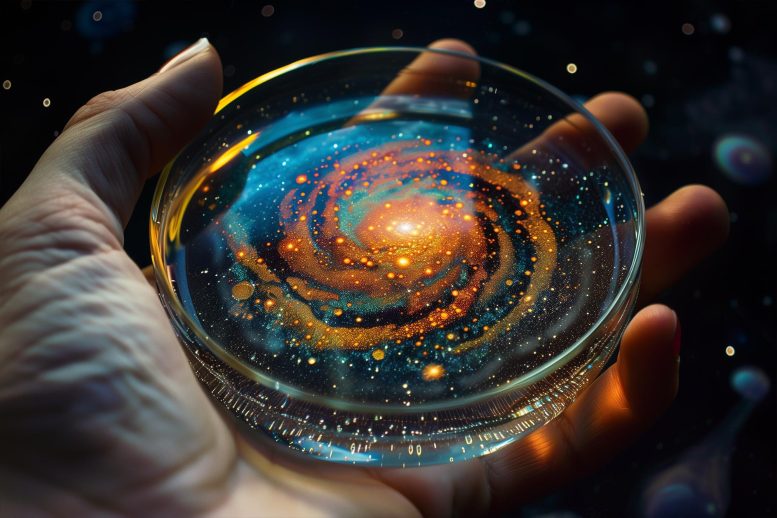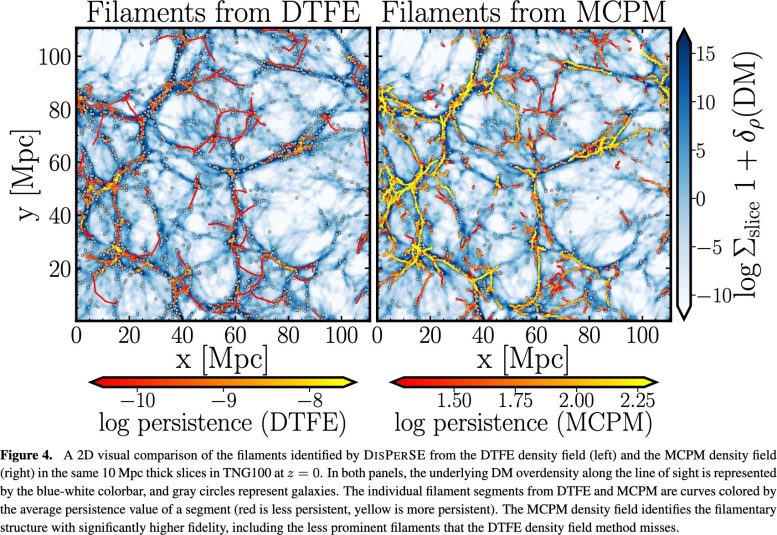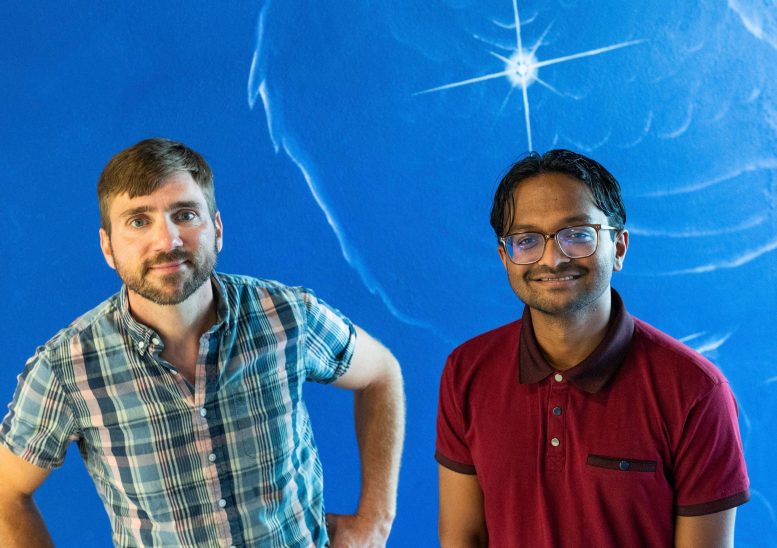

Utilizing a slime mold algorithm, astronomers have mapped the cosmic web, enhancing our understanding of galaxy evolution. This breakthrough research provides deeper insights into how large cosmic structures influence galaxies over time.
In 2010, an experiment in Japan using slime mold to replicate the Tokyo railway system led to the development of a concept called biologically inspired adaptive network design. This idea was later utilized by a graduate student at New Mexico State University in his Ph.D. thesis to enhance methods for detecting the universe’s vastest structures, known as the “cosmic web.”
Algorithm Enhancement for Astronomical Studies
Measuring the environmental density of galaxies isn’t new, but the paper “Filaments of the Slime Mold Cosmic Web and How they Affect Galaxy Evolution,” published in August’s Astrophysical Journal, outlines how Hasan changed one step in the existing research framework combining it with a new method using an algorithm based on the slime mold model.
“I didn’t know how well it was going to work or not work, but I had a hunch the slime mold method could tell us much more detailed information about how density is structured in the universe, so I decided to give it a try,” said Farhanul Hasan, lead author on the paper who subsequently earned his Ph. D. in astronomy at NMSU. “As it turned out, it produced a lot more detailed discrete structures than the old method.”

Insights Into Galaxy Evolution
NMSU assistant astronomy professor Joe Burchett co-authored the paper with Hasan and eight other authors. Burchett introduced the slime mold method to the astrophysical application at the University of California, Santa Cruz as a post-doctoral fellow. With Burchett’s help, Hasan took this research a major step further at NMSU.
“We were looking for a way to visualize the cosmic web, the large-scale structure of the universe, and in particular the gas that sort of permeates the cosmic web,” Burchett said. “Working with an expert on graphics rendering, Oskar Elek, we came across this algorithm that was designed to mimic slime mold and its ability to find food sources by reforming itself to kind of look a lot like the cosmic web. That was the inspiration for setting off on this whole path. We’ve worked on that now for several years. Farhan’s work has taken it to new heights that we’d only dreamed of back then.”

Impact of Cosmic Structures on Galaxy Development
Scientists have known since the eighties that the environment of a galaxy impacts how it grows and evolves, but the exact nature of that connection is still debated. Hasan’s research demonstrates the way galaxies evolve is impacted by their proximity to dense cosmic structures.
“These filaments are the highways of the universe and just as highways affect cities in real life, these filaments affect galaxies in the universe in many different ways,” Hasan said. “But another thing I want to highlight is that this connection completely depends on what era of the universe you’re looking at.”
What Hasan’s research found is that the impact on galaxies has flipped. In earlier times, galaxies’ growth was stimulated by close proximity to larger structures. Now galaxies are stymied by being near these larger structures.
“One of the big takeaways here is that if we can map out the gas around the real universe at many different times it’s easier to build a consistent picture,” Hasan said. “If we collect data from earlier times where things looked different and later times, we can get a physical picture of how that gas is distributed on large scales and how that distribution affects whether galaxies are growing because of them or being hindered in their growth.”
“We have very fundamental questions about how galaxies effectively live and die,” Burchett said. “The data that we’ve collected for nearly a century now suggests that where a galaxy lives has a huge impact on its lifespan. Basically, galaxies have a harder time surviving in the ‘big cities’ of the universe.
“What Farhanul has done is to look at the state-of-the-art models we have of galaxy formation and evolution via these large-scale computer simulations and try to understand how a galaxy’s local environment and large-scale environments really impact its evolution.”
Future Research and Applications
After earning his Ph.D. at NMSU, Hasan began a post-doctoral fellowship in September at the Space Telescope Science Institute, where he will continue this research. What’s next? Applying his theory to real data from NASA’s Hubble Space Telescope. Hasan plans to present results of that work in a couple of years.
“We’re applying it to observational data to actually map out the filamentary structure in the real universe,” Hasan said. “We’re using data from the Hubble that’s already been taken to identify how the gas in these filaments is distributed. It can help us test many theories about galaxy and structure formation on many large scales. It really brings this whole thing full circle.”
Reference: “Filaments of the Slime Mold Cosmic Web and How They Affect Galaxy Evolution” by Farhanul Hasan, Joseph N. Burchett, Douglas Hellinger, Oskar Elek, Daisuke Nagai, S. M. Faber, Joel R. Primack, David C. Koo, Nir Mandelker and Joanna Woo, 30 July 2024, The Astrophysical Journal.
DOI: 10.3847/1538-4357/ad4ee2